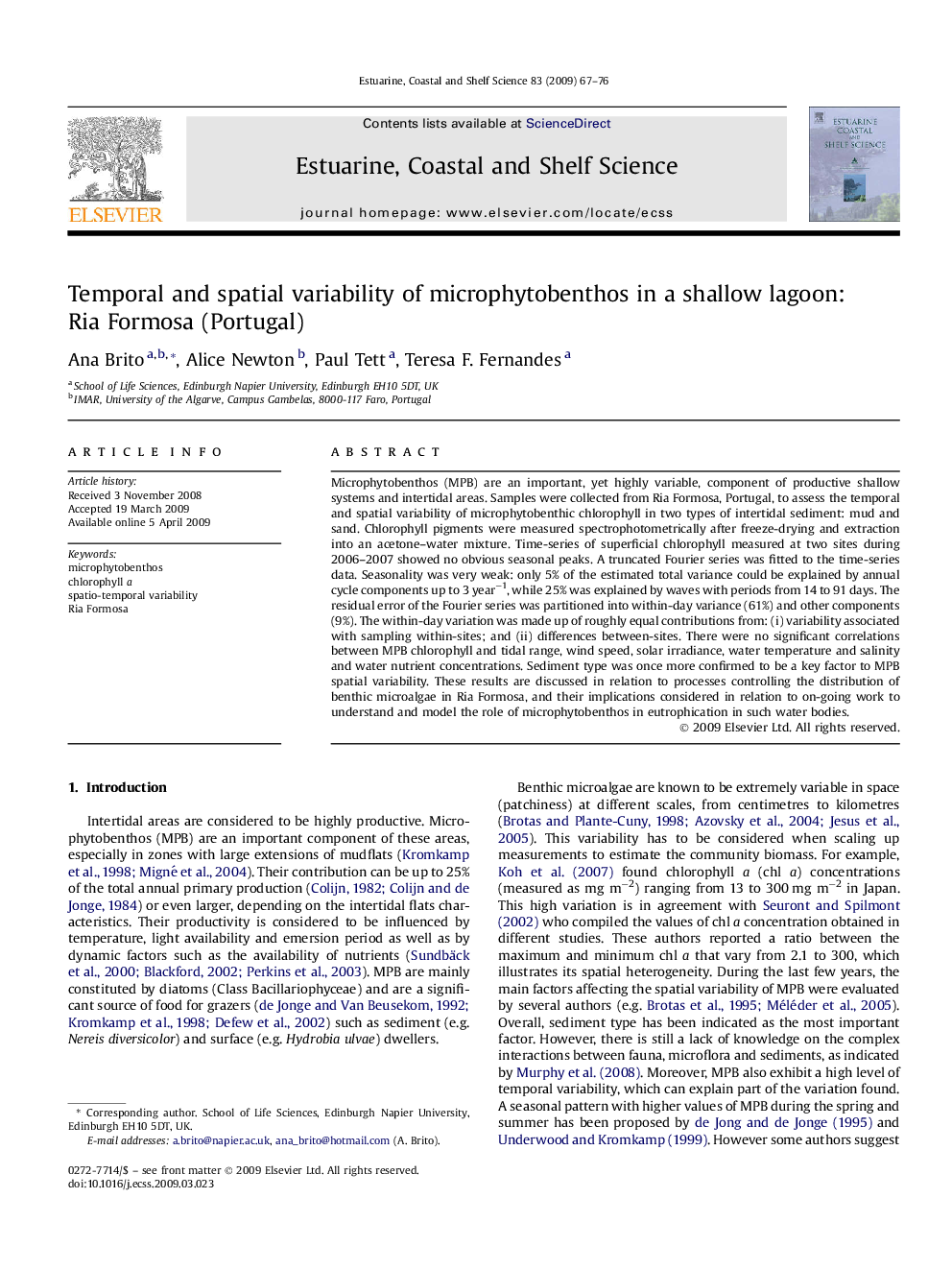| Article ID | Journal | Published Year | Pages | File Type |
|---|---|---|---|---|
| 4541376 | Estuarine, Coastal and Shelf Science | 2009 | 10 Pages |
Microphytobenthos (MPB) are an important, yet highly variable, component of productive shallow systems and intertidal areas. Samples were collected from Ria Formosa, Portugal, to assess the temporal and spatial variability of microphytobenthic chlorophyll in two types of intertidal sediment: mud and sand. Chlorophyll pigments were measured spectrophotometrically after freeze-drying and extraction into an acetone–water mixture. Time-series of superficial chlorophyll measured at two sites during 2006–2007 showed no obvious seasonal peaks. A truncated Fourier series was fitted to the time-series data. Seasonality was very weak: only 5% of the estimated total variance could be explained by annual cycle components up to 3 year−1, while 25% was explained by waves with periods from 14 to 91 days. The residual error of the Fourier series was partitioned into within-day variance (61%) and other components (9%). The within-day variation was made up of roughly equal contributions from: (i) variability associated with sampling within-sites; and (ii) differences between-sites. There were no significant correlations between MPB chlorophyll and tidal range, wind speed, solar irradiance, water temperature and salinity and water nutrient concentrations. Sediment type was once more confirmed to be a key factor to MPB spatial variability. These results are discussed in relation to processes controlling the distribution of benthic microalgae in Ria Formosa, and their implications considered in relation to on-going work to understand and model the role of microphytobenthos in eutrophication in such water bodies.
